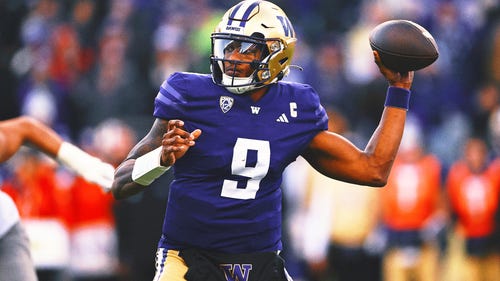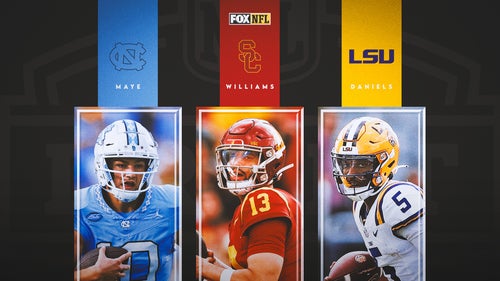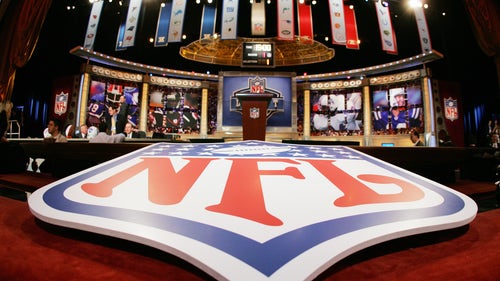
More teams staying home for camp
For a few years, inside the Philadelphia Eagles' facility -- a building perfectly capable of hosting a training camp -- team president Don Smolenski openly wondered if it was time to join the growing trend in the NFL by bringing camp home.
“Is this something to look at? Do you want me to or not?” Smolenski, in an interview with FOX Sports this week, recalled asking high-ranking members of the organization. “But for Andy (Reid), that camaraderie aspect of going away was important. For Chip (Kelly), it was more about everything else.”
Everything else can be bundled under two elements the Eagles will enjoy during this year's camp: comfort and better technology.
The Eagles, their NFC East rival New York Giants and the Arizona Cardinals are among the latest to end the longstanding NFL tradition of going away for training camp. All three teams will begin, or have already begun, camp this week with full-squad practices at their state-of-the-art facilities. Players will be housed in nearby hotels instead of squeezing their 300-pound bodies into college dorm rooms.
According to the NFL, 19 of 32 teams are staying home for camp this year, up from only five clubs who stayed home in 2000. The Washington Redskins are actually going away after being home the past few years, but the rest of the league is trending the other way.
Among the amenities at home for most teams: better food, full indoor fields, proximity to team doctors and hospitals, bigger meeting rooms, top film-viewing equipment and overall increased efficiency.
As for going away, it's about nostalgia, fan access, reaching another part of the fan base and building camaraderie.
Teams see the value in the latter list but are now opting for the former.
“The last time we did this, we ended up winning the Super Bowl, so I'm not sure how much of a factor (camp camaraderie) is,” Giants president and CEO John Mara said, referring to the 2011 camp that was held in East Rutherford, N.J. because of the late start following the lockout. “There's something to be said about going away and being out of your home area, I guess, but I don't know that there is a right or a wrong way to do this. I just know we're going to do it this way for the time being and see how it works out.”
It says plenty that Mara is a convert to the new way of thinking. His father, late Giants co-owner Wellington, loved training camp -- so much so he refused to stay in a hotel and instead spent camp in the dorms as the players did.
“Some of my greatest memories are of sharing a room with him in training camp for many, many years,” Mara said. “But it's a new day and age.”
Smolenski felt the tug of emotion when he informed Lehigh University athletic director Joe Sterrett and director of conference and special housing Mary Kay Baker that the Eagles wouldn't be returning to the Bethlehem, Pa., school after 17 years of training there. Baker was fighting back tears during the meeting, Smolenski said.
But in the end, emotion is offset by the excitement of a more efficient camp, especially for a technologically-savvy coach like Kelly. Case in point: Kelly and his staff will have their practice filmed with high-definition cameras, downloaded and ready to watch as soon as the team steps off the NovaCare Complex practice fields, whereas there would normally be lag time for the footage to download at Lehigh. Seconds matter to Kelly during the work day, so minutes would surely be agonizing for him.
Kelly is also into nutrition and sleep studies for his players and believes their being at the team's cafeteria and in their own beds (following five days in a hotel at the start of camp) will help in those departments.
“Even though we're staying at our houses, you're at the facility all day long building that camaraderie,” said new Eagles tight end James Casey, who stayed home with the Houston Texans for the first four camps of his NFL career. “When you play games during the season, you’re staying at your house all week, so why not do that during training camp? And you get good facilities -- cold tub, hot tub, weight room.
“I was so happy when I heard we were staying here. I don't want to go anywhere else.”
Other teams don’t mind roughing it for a while, either because their home facilities aren’t big enough or because they subscribe to the theory of building team chemistry while going away. Reid’s Kansas City Chiefs went away for camp this year. So did the Pittsburgh Steelers and New York Jets.
Jets coach Rex Ryan believes the bonding of going away is tangible.
“When it starts, you may see guys driving to practice in 30 different cars,” Ryan said. “By the time camp comes to an end, you see guys coming to practice in only 10 cars. I always view that as a sign that we’re becoming more tight-knit and closer as a team.”
Said Steelers coach Mike Tomlin, “I love this process, I love going to camp, I love team-building, readying ourselves to pursue our goals. I am extremely excited.”
Taking players away from home can also help limit distractions. In many cases, they leave big cities to head to rural areas. They also leave behind familial obligations.
At least, the Giants are recreating that atmosphere by putting their players in a hotel while they train at home.
“A couple of guys who recently have babies were not all that disappointed about the opportunity to get some sleep,” a laughing Mara said, perhaps referring to quarterback Eli Manning. “I'm not going to mention any names.”
Rounding out the positives in going away is the chance to reach a different part of the fan base. The Jets, who practice and play in New Jersey, will train in front of fans in upstate New York at SUNY Cortland.
However, there are ways to reach more fans by staying home.
After getting an average of roughly 115,000 fans over two-plus weeks at Lehigh each year, the Eagles expect to host roughly 220,000 fans in five open practices at Lincoln Financial Field. The first of those is Sunday’s “alumni day,” with big names such as former safety Brian Dawkins on the guest list. Smolenski said 55,000 tickets have already been reserved, with a full house a possibility.
The Cardinals, meanwhile, will open the lower bowl of University of Phoenix Stadium for fans who don’t have to make the trek up to Flagstaff, Ariz., as they have in years past. All of the Cards’ practices are open to the public.
A roof. Air conditioning. Plenty of parking at the team’s complex in Glendale. And access for the team to their facility. What’s not to love?
“The arrangements we had with the school we trained at (Northern Arizona University) changed over the last couple of years. They weren’t allowing us to use their best facilities,” Cardinals president Michael Bidwill said. “So we just stepped back, looked at our situation in Phoenix and said, ‘We've got this great, state-of-the-art stadium with air conditioning and the great facilities.' It’ll be great for the purpose of camp and for fans who can just drive to the stadium and don’t have to take off a day or two of work to drive up.”
The Cardinals can rotate their fields, using a partial artificial surface that’s rolled in and out of the stadium on tracks to reduce wear and tear on the grass.
“Over the last 20 years, teams have built these great facilities. When you compare it to what’s available, it’s a fantastic opportunity for us to stay home,” Bidwill said. “It's not really an alternative; it’s probably the best situation for us and our fans.”
A full indoor field -- whether it be a team’s stadium or a newly constructed practice facility such as the one the Giants have -- might be the biggest reason teams are staying home. With the elimination of two-a-days in the new collective bargaining agreement, coaches can’t afford any rainouts. “If you lose a couple of days of practice to weather,” Mara said, “it’s the end of the world for the coach.”
Now, it’s just the end of traditional training camp. And while a few tears were shed because of the end of longstanding relationships with universities, most of the league has embraced the changing times.
“I grew up going to Fairfield University, C.W. Post (now Long Island University), Monmouth College and places like that for training camp. I looked forward to those summers quite a bit and will always have great memories there,” Mara said. “But the world has changed. It just makes more sense for us to be here right now.”















































































































































